What Are Heirloom Turkey Breeds (and Why Would You Want One?)
Heirloom turkey breeds or heritage turkeys are purebreds that have retained the characteristics of their ancestors.
Heirloom turkeys are unique turkey breeds because the characteristics they possess are not present in most turkeys.
These unique traits are some of the reasons you should consider adding an heirloom breed to your flock.
These traits may make one breed better suited to your property, especially if you want a solid and sustainable source of turkey products.
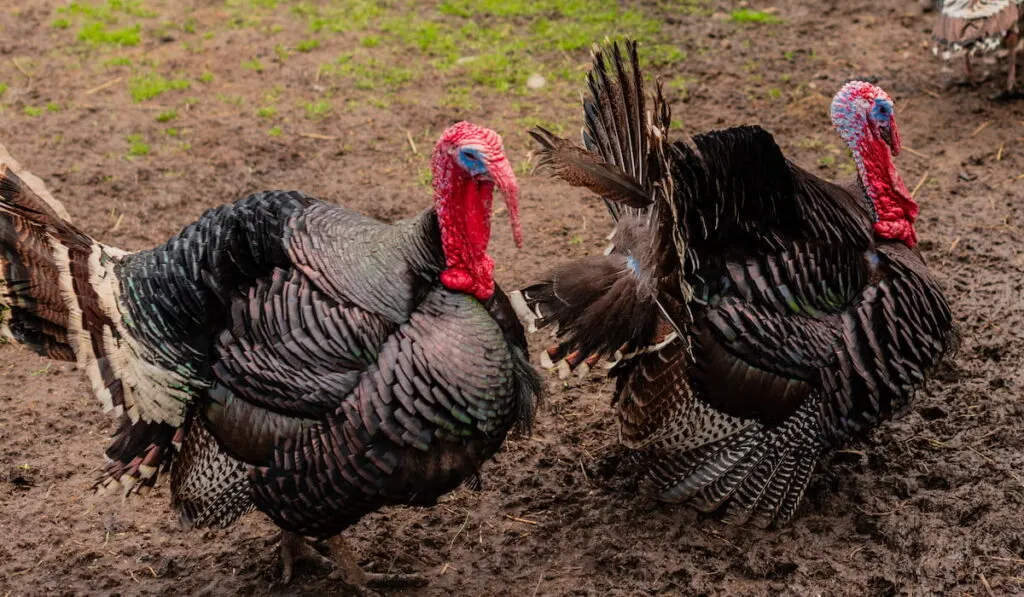
Although heirloom turkeys are slow growers, they are getting increased recognition due to their excellent characteristics.
Some of these characteristics include:
- Heirloom turkeys are highly disease resistant and can survive harsh environments.
- Heirloom turkeys are resistant to parasites that usually affect other turkeys. As a result, heirloom turkeys may be less susceptible to parasitic attacks.
- Due to their heightened maternal instincts, heirloom turkeys make good mothers. They sit on eggs until they hatch, and they also care for their young.
- Heirloom turkeys are very fertile, and they can mate naturally. They do not require artificial insemination to produce eggs.
- Heirloom turkeys are excellent foragers. Their foraging skills promote their ability to survive and make them ideal for insect and pest control on your farm.
7 Heirloom Turkey Breeds
Bourbon Red Turkey
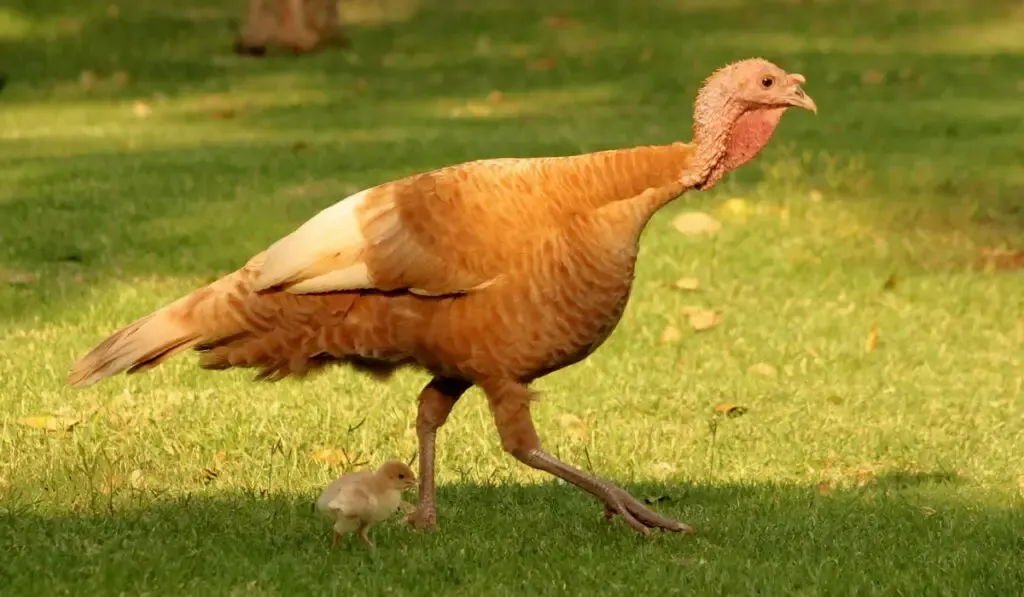
The Bourbon Red is an heirloom breed that originated in the Bluegrass region of Kentucky in the late 1800s. It comes from a cross between White Holland, Buff, and Bronze turkeys.
Bourbon Reds are beautiful turkeys with brownish to red plumage. They have white tail and flight feathers, with chestnut mahogany breast and neck feathers. Then sometimes, the body of the toms is edged in black.
The beak of the Bourbon Red turkey has a dark base with a light horn tip.
They have red wattles, black beards, and pink toes and shanks. The standard weight for a young Bourbon Red tom is 23 pounds, while young hens can weigh around 14 pounds.
Bourbon Red turkeys are raised mainly for their meat. But due to how attractive they are, you can use them for exhibition or keep them as backyard poultry.
Bourbon Reds are active foragers and will thrive in a pasture production system as purebreds. You can also decide to cross them with other turkeys.
Midget White Turkey
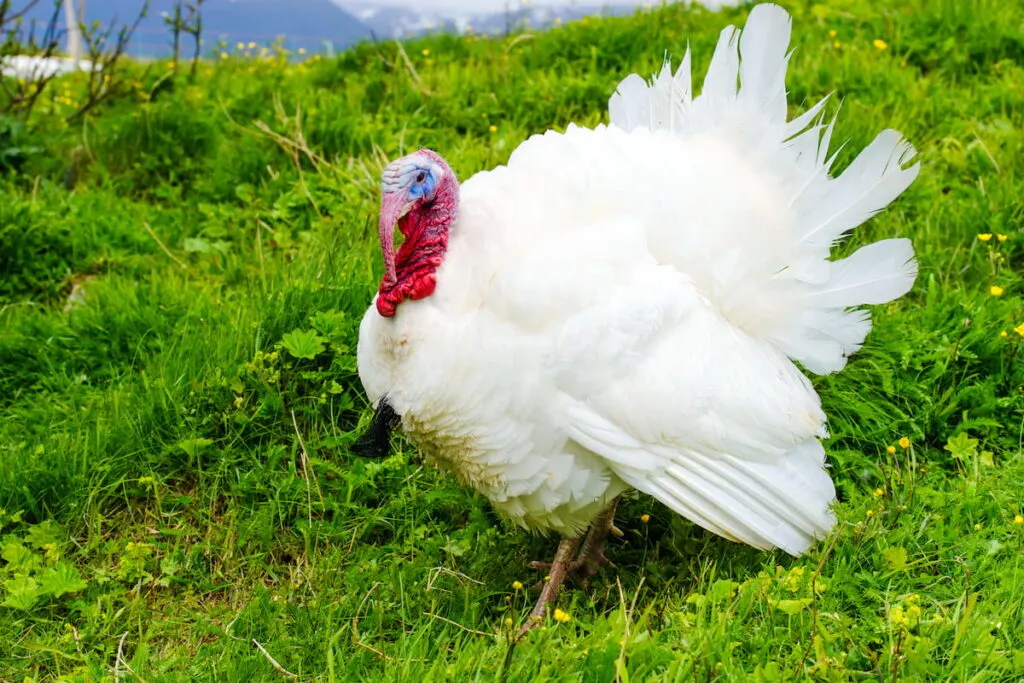
The Midget White turkey was developed in the early 1960s at the University of Massachusetts. They were created by crossing Royal Palm turkeys with Broad-Breasted Whites.
Midget White turkeys are hardy and can tolerate almost any climate. They are small-sized birds only slightly larger than chickens.
Midget White turkeys have broad breasts with white plumage, and on average, the toms weigh around 13 pounds, while hens weigh about 8 pounds.
Midget White turkeys are raised mainly for meat production. But they may also be bred for their egg production, fertility, and hatchability.
The hens lay around 60-80 eggs on average each year. Midget White turkeys are ideal for homestead and small farms.
White Holland
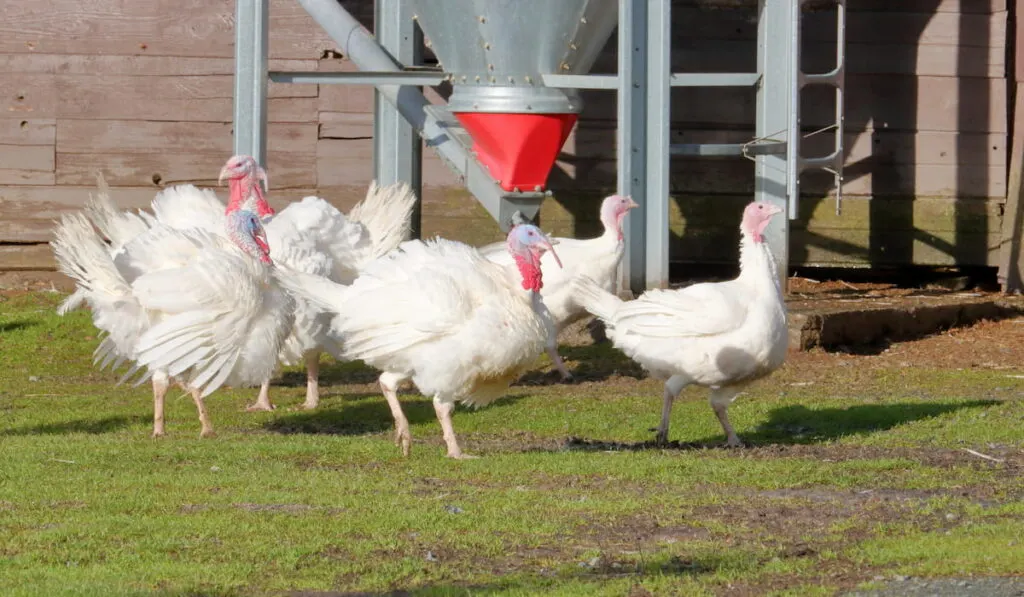
White Holland Turkeys come from a cross between native birds in North America and white European turkeys. As the name reveals, this heirloom turkey breed is indigenous to Holland.
White Holland turkeys are hardy and can tolerate most climates.
They have beautiful, showy, snow-white feathers, red to bluish heads, black beards, pink to horn-colored beaks, and pinkish-white wattles and throats. White Holland turkeys also have brown eyes and pinkish-white toes and shanks.
At maturity, White Holland toms weigh an average of 35 pounds while females weigh around 19 pounds. White Holland turkeys are generally docile, although some may be aggressive.
White Holland turkeys are raised mainly for their meat. Hens lay large, medium brown to pale cream eggs, and they make calm and attentive mothers.
Buff Turkey
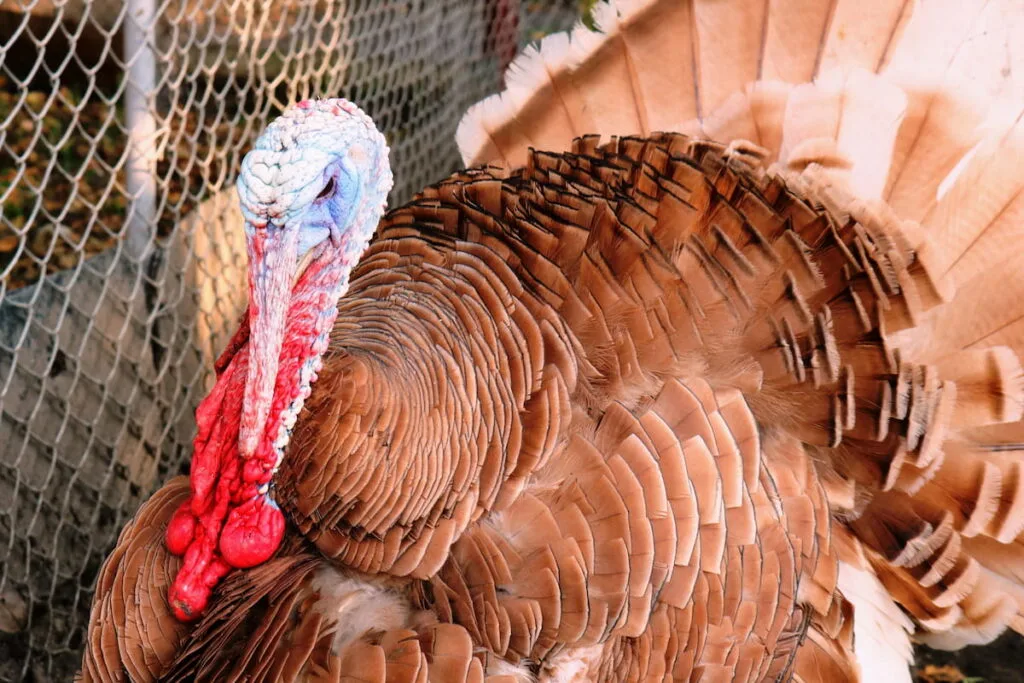
The Buff turkey is a domestic breed that is indigenous to the mid-Atlantic region. It gets its name from its attractive buff-colored plumage.
Buff turkeys are medium-sized birds with light reddish or light brown plumage. They have white tail feathers with light buff bars across them at the ends. Their primary and secondary wing feathers are also white with buff shading.
Buff turkeys have flesh-colored or bluish-white toes and shanks. They also have black beards with hazel-colored eyes.
Buff hens and toms have different colored plumage. The plumage of Buff hens tends to get lighter with age, especially after molting.
At maturity, Buff toms weigh an average of 22 pounds, while hens weigh around 13 pounds. Buff turkeys are raised mainly for meat production. Buff hens lay medium brown to pale cream-colored eggs with spots.
Buff turkeys are docile, strong, and hardy birds, but some birds can be aggressive.
Royal Palm Turkey
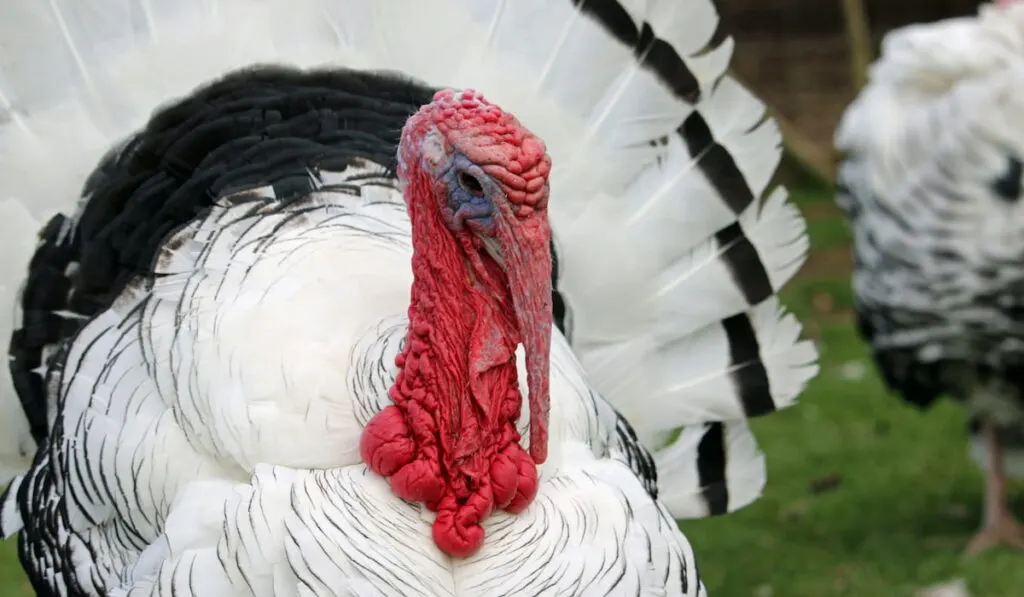
The Royal Palm turkey is a small-sized attractive turkey breed. Members of this breed are mostly bred for display and ornamental purposes due to their unique appearance.
Royal Palm turkeys have white plumage with a contrast of sharp metallic-black edging on their feathers.
They have distinctive tails—each tail feather has white edges and black bands. Royal Palm turkeys also have white wings with narrow black edging across each feather.
Royal Palms have black beards, white breasts, red to bluish-white heads, light brown eyes, and light horn-colored beaks.
The males’ wattles are red to bluish-white and their feet and legs are deep pink. On average, Royal Palm toms weigh around 16 pounds, while hens weigh 10 pounds.
Although Royal Palm turkeys are selected and bred for beautifying the farm, they can still produce meat.
They are also successful fliers and excellent foragers. Their foraging ability makes Royal Palm turkeys perfect for controlling insects on your property.
Narragansett Turkey
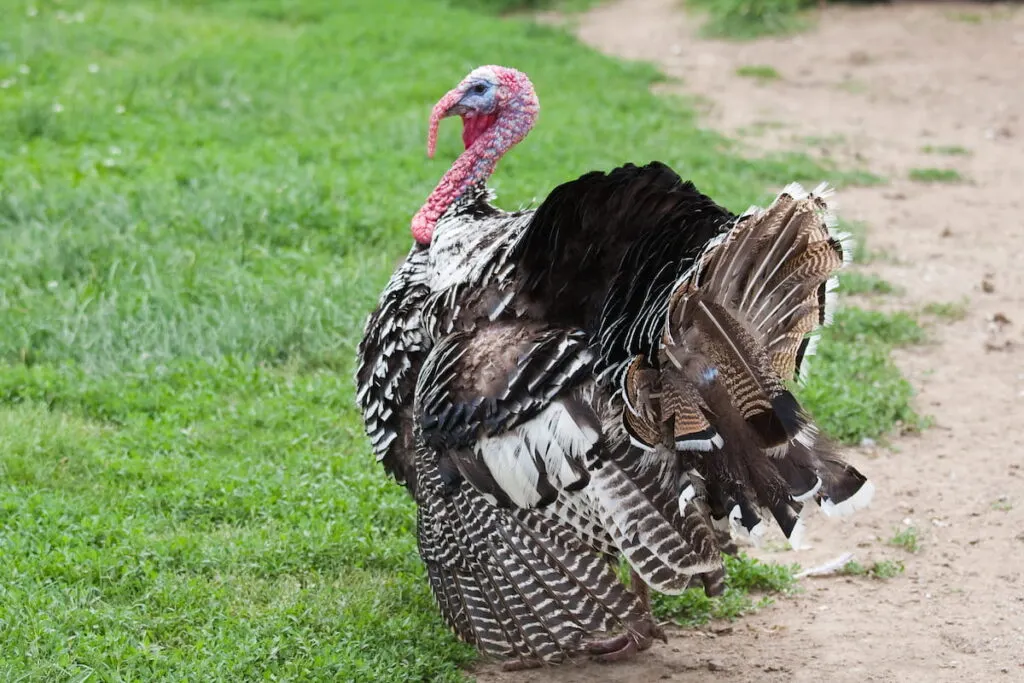
Developed in Narragansett Bay, Narragansett turkeys are the product of a cross between domestic turkeys and Eastern wild turkeys.
These large birds are known for their even temperament and their ability to be self-sufficient by living off the land.
Narragansett turkeys have beautiful plumage with unique grey, tan, black, and white patterns.
Although they resemble Bronze turkeys, Narragansetts have dull black or grey feathers in place of the distinctive copper of Bronze turkeys.
The wings of a Narragansett turkey are white with black bars on each feather. They also have black beards, grayish-black beaks, red wattles, and orange-pink legs and feet. Their heads and necks are mostly featherless and can range from red to bluish-white.
On average, Narragansett toms weigh around 23 pounds, while hens weigh 14 pounds. Narragansett turkeys are raised mainly for their meat.
However, some people keep them for ornamental purposes. Narragansett hens are excellent layers and have good maternal instincts.
Black Turkey
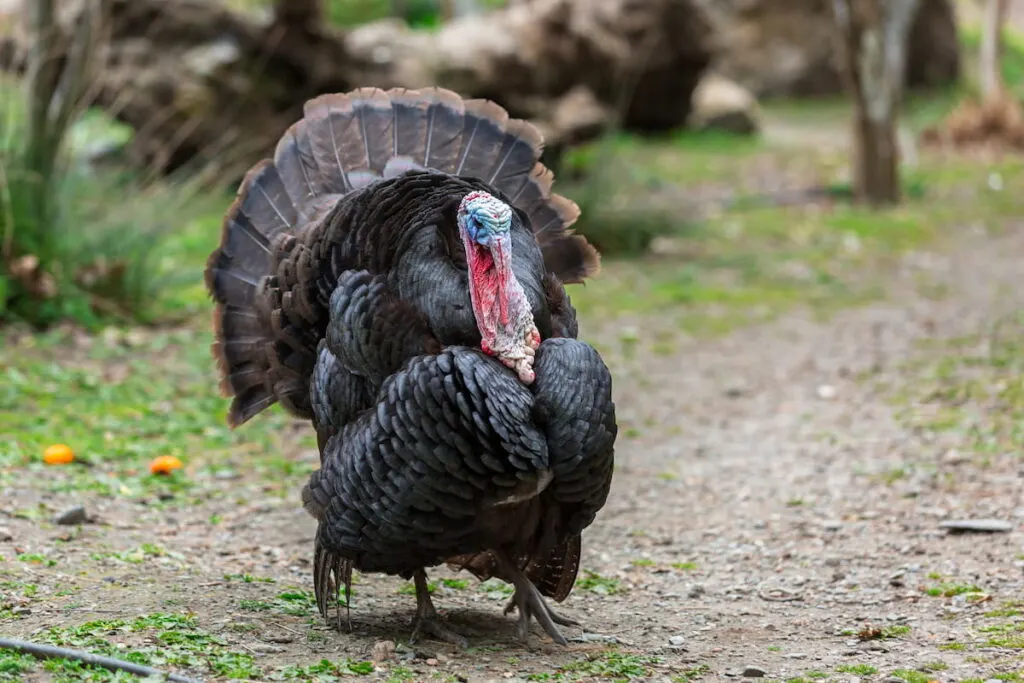
The Black turkey, also known as Norfolk Black turkey or Black Spanish turkey, is an heirloom breed with European origins. This medium-sized bird is generally calm and can tolerate almost any climate.
Black turkeys have beautiful metallic-black plumage with a green luster.
They also have black beaks, red wattles, dark brown eyes, and pink toes and shanks. Although they have black plumage, their skin is usually white.
Black Turkey poults have white or bronze feathers that eventually change when they molt. They also have black toes and shanks that become pink when they mature.
Mature toms weigh an average of 33 pounds, while hens weigh around 18 pounds.
Hens will lay around 40-50 eggs per year for the first two years. However, the number of eggs they lay reduces as they age. Hens can keep producing eggs for 5-7 years.
Black turkeys are raised mainly for meat. However, you can also use these turkeys for insect control.
Resources:
- https://agro4africa.com/turkey-breeds/
- http://petslady.com/article/feathered-forefathers-top-ten-heritage-turkey-breeds
- https://livestockconservancy.org/index.php/heritage/internal/bourbonred
- https://www.livestockconservancy.org/index.php/heritage/internal/midgetwhite
- https://livestockconservancy.org/index.php/heritage/internal/whiteholland
- https://livestockconservancy.org/index.php/heritage/internal/bronze
- https://www.livestockconservancy.org/index.php/heritage/internal/royalpalm
- https://backyardpoultry.iamcountryside.com/poultry-101/black-turkey-breed-profile/
- https://www.roysfarm.com/jersey-buff-turkey/
- https://www.roysfarm.com/midget-white-turkey/
- https://www.roysfarm.com/white-holland-turkey/
- https://www.roysfarm.com/narragansett-turkey/
- https://www.roysfarm.com/black-turkey/
- http://nwedible.com/is-a-heritage-turkey-worth-it/

